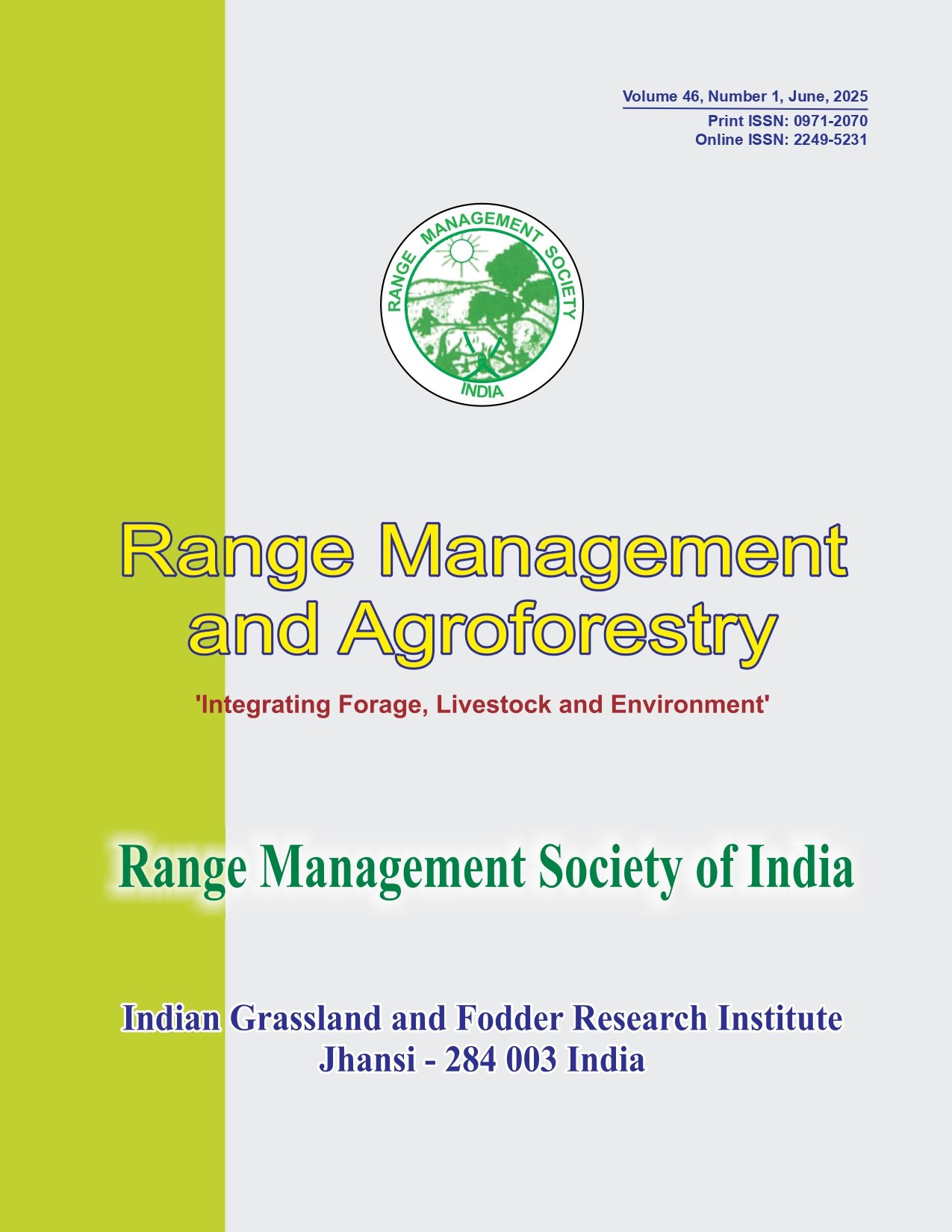Effects of potassium and boron fertilization on nutrient content and uptake in fodder berseem (Trifolium alexandrinum L.)
Keywords:
Berseem, Boron spray, Dry matter yield, Nutrient uptake, Potassium fertilizationAbstract
A field experiment was conducted at CCS Haryana Agricultural University, Hisar during rabi season of 2017-18 to record the effect of potassium and boron on nutrient content and uptake in berseem. The experiment was laid out in split plot design with treatment combinations comprised of four potassium levels i.e. 0, 20, 40 and 60 kg K2O ha-1 in main plots and four levels of boron i.e. 0, 2, 4 kg B ha-1 and 0.2% foliar spray at initiation of flowering and at 50% flowering in sub plots. The treatments were replicated thrice. The results indicated that the maximum dry matter yield (55.32 q/ha) was obtained when berseem was fertilized with 40 kg K2O ha-1. Nitrogen, phosphorus, potassium and boron content showed an increasing trend in their concentration with increasing potassium levels with highest NPK content at 60 kg K2O ha-1 and thus an increasing trend in uptake of these nutrients was also observed. Incremental doses of fertilized boron resulted in a significant improvement in dry matter yield upto 2 kg B ha-1. Total nitrogen, phosphorus, potassium and boron uptake was highest with 60 kg K2O ha-1. Nitrogen, phosphorus, potassium and boron content increased with increasing boron levels upto 4 kg B ha-1 in 1st, 2nd and 3rd cut which also led to an increased uptake of these nutrients accordingly, but in seed and straw, potassium and boron contents were highest with 0.2% B spray at flower initiation and at 50% flowering stages.




